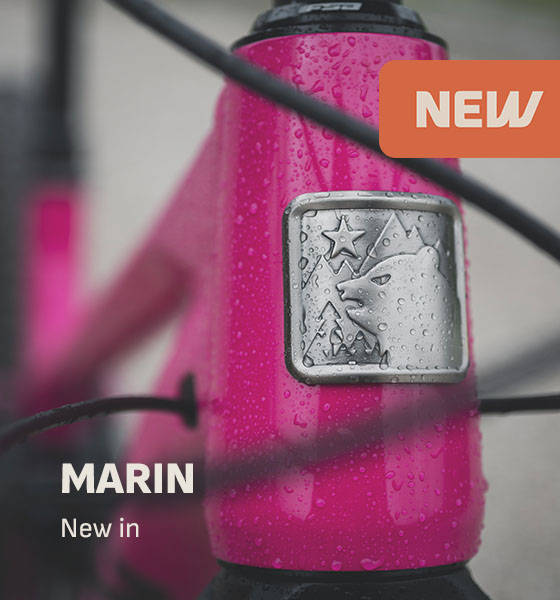
As simple a creation, the bicycle is, modern bikes can be packed with incredible, cutting-edge technology. One such example is wireless electronic drivetrains. SRAM introduced their first eTap wireless road bike groupset back in 2015 and since then they've expanded it to their MTB line with Eagle AXS and even down to midrange GX Eagle MTB and Rival road options.
Do those extra units of currency add tangible performance benefits? Is it just another gimmick to make us part with our cash? Seven years since its inception the technology still costs a pretty penny and there are many who argue that it just isn't worth the extra outlay for just decluttering the front of your bike.
Let's take a dive in and find out if wireless really is worth it!
Brief history
Since Campagnolo introduced the Gran Sport parallelogram rear derailleur in 1949, we've used cables to change the gears on our bikes. There has been a lot of drivetrain innovation since then with some serious hits such as; index shifting, Rapidfire, STI shifters and more recently clutch-equipped rear derailleurs. There have also been severe horrific misses along the way though... (looking at you Shimano with your Biopace chainrings, AirLine's system and MTB dual controls!). So where do wireless drivetrains fit in the spectrum?
Electronic drivetrains are not new. Mavic had their Zap electronically controlled gear system as far back as 1992 and Shimano introduced Di2 in 2009. Di2 was the first commercially successful electronic drivetrain, and Shimano still uses the technology today, but it isn't without fault. It needs a lot of fiddly wiring to make it all work, and all those wires have to be a specific length for the bike. A battery has to be hidden in the frame/seat post or mounted externally. And there is still a chance one of those wires could break in a crash or get caught on something and ripped out. It's also possible your bike isn't Di2 compatible and that will lead you to modify or bodging into place (never good!). Even the latest "semi-wireless" Di2, where the shifters are not connected to the battery (but the derailleurs are) requires a degree of integration and compatibility in order to work.
Benefits
Wireless drivetrains remove both regular gear cables and electronic wires, which brings a number of benefits. For one, there are no cables or wires to snap or damage! Not everyone has snapped a gear cable or ripped out a Di2 e-tube wire, so no big deal, right? What most cyclists will have dealt with though, is the frustration of your gears not working correctly because your cable is on its last legs and has been subjected to thousands of miles of abuse. You'll be familiar with the pattern...
- "Ah, that looks worn and frayed. It'll probably last one more ride..."
- Suffer with dodgy gears for the entire ride
- Forget about it as soon as you get back
- Remember after you've kitted up for another ride and are getting the bike out
- Go back to step 1.
With wireless drivetrains, you'll never have to replace a gear cable again, which saves both time and cost. We all like things that let us ride our bikes more than working on them!
Wireless gear maintenance
And speaking of working on them, with the modern trend of gear cables being internally routed through the frame (and even the handlebars and headsets in some cases) the act of changing a gear cable is getting harder and harder and more time consuming than ever. If you're not lucky enough to have a bike that has tubes built into the frame to house that cable, then chances are you're going to be pulling your hair out trying to fish that new cable out of the tiniest hole in the frame and what should be a 30-minute job takes a whole afternoon. And then a trip to the bike shop to let someone else do it for you as you've lost the will to live and are closer to throwing the bike out of the window than you are to fixing it... It's safe to say internal cable routing can be a battle, so going wireless will certainly spare your swear jar a few coins!
Ease of use
Changing gear is easier with wireless. This might sound silly but watch any new rider try to change gears on a regular bike smoothly and chances are they are going to mess it up. For seasoned riders, the muscle memory it takes to push that cable-actuated gear lever a certain distance at the perfect moment in the pedal rotation and with just the right amount of force to make a smooth shift is second nature, but it takes time to get to that point and in the heat of the moment, even the best of us can miss-shift! With wireless drivetrains, the shift action, and the shift itself is the same, every time. Doesn't matter how hard you push the button, or where you push it, the shift will be perfect and the same as every other shift. For something that just feels natural to most of us, that change is huge for less experienced riders, and it has benefits for riders with decades of experience too.
They (could) even be great for kids too. OK, you'll have pretty blinged-out kids bikes to have a wireless drivetrain, but if we had a pound for every parent who has asked how to make it easier for their kids to change gear as they aren't strong enough for grip shift or trigger shifters, we'd probably be able to help some of those kids out! Wireless shifting makes the art of changing gears easier and more consistent and there's no arguing with the benefits of that!
In summary...
- Shifting is more consistent
- Shifting is easier and better
- The bike looks cleaner and has less rattles
- Less maintenance and easier to work on
What's not to like?! Wireless drivetrains are not cheap but the performance and day-to-day ease of use/upkeep make them worth the ticket price in our minds. Overall, it's easy to see that wireless drivetrains bring tangible benefits to your riding experience and if you can afford one then we highly recommend you try it out and reap the rewards - you won't regret it!






